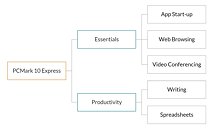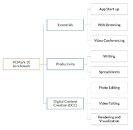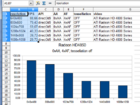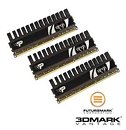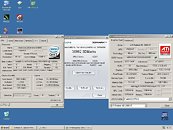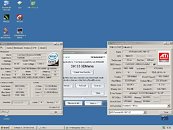Zhaoxin KX-7000 8-Core CPU Gets Geekbenched
Zhaoxin finally released its oft-delayed KX-7000 CPU series last December—the Chinese manufacturer claimed that its latest "Century Avenue Core" uArch consumer/desktop-oriented range was designed to "deliver double the performance of previous generations." Freshly discovered Geekbench 6.2.2 results indicate that Zhaoxin has succeeded on that front—Wccftech has pored over these figures, generated by an: "entry-level Zhaoxin KX-7000 CPU which has 8 cores, 8 threads, 4 MB of L2, and 32 MB of L3 cache. This chip was running at a base clock of 3.0 GHz and a boost clock of 3.3 GHz which is below its standard 3.6 GHz boost profile."
The new candidate was compared to Zhaoxin's previous-gen KX-U6780A and KX-6000G models. Intel's Core i3-10100F processor was thrown in as a familiar Western point of reference. The KX-7000 scored: "823 points in single-core, and 3813 points in multi-core tests. For comparisons, the Intel's Comet Lake CPU with 4 cores and 8 threads plus a boost of up to 4.3 GHz offers a much higher score. It's around 75% faster in single and 17% faster in multi-core tests within the same benchmark." The higher clock speeds, doubled core counts and TDPs do deliver "twice the performance" when compared to direct forebears—mission accomplished there. It is clear that Zhaoxin's latest CPU architecture cannot keep up with a generations old Team Blue design. Loongson's 3A6000 processor is a very promising prospect—reports suggest that this chip is somewhat comparable to mainstream AMD Zen 4 and Intel Raptor Lake products.
The new candidate was compared to Zhaoxin's previous-gen KX-U6780A and KX-6000G models. Intel's Core i3-10100F processor was thrown in as a familiar Western point of reference. The KX-7000 scored: "823 points in single-core, and 3813 points in multi-core tests. For comparisons, the Intel's Comet Lake CPU with 4 cores and 8 threads plus a boost of up to 4.3 GHz offers a much higher score. It's around 75% faster in single and 17% faster in multi-core tests within the same benchmark." The higher clock speeds, doubled core counts and TDPs do deliver "twice the performance" when compared to direct forebears—mission accomplished there. It is clear that Zhaoxin's latest CPU architecture cannot keep up with a generations old Team Blue design. Loongson's 3A6000 processor is a very promising prospect—reports suggest that this chip is somewhat comparable to mainstream AMD Zen 4 and Intel Raptor Lake products.























































